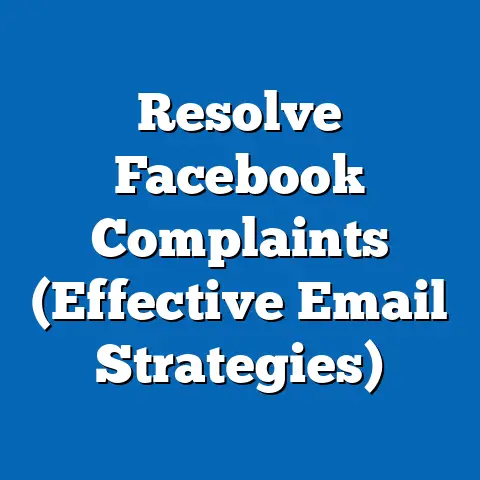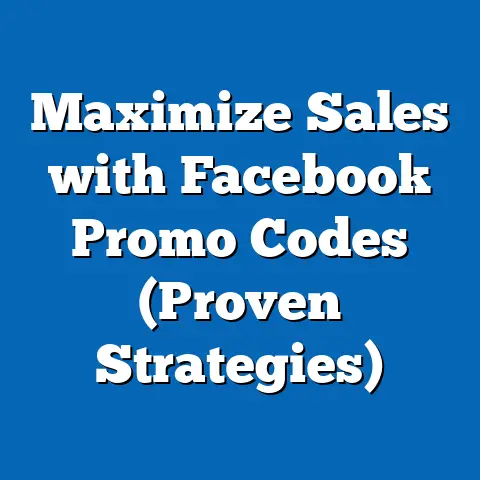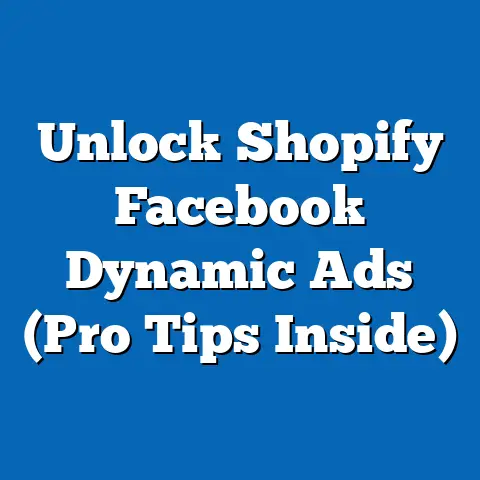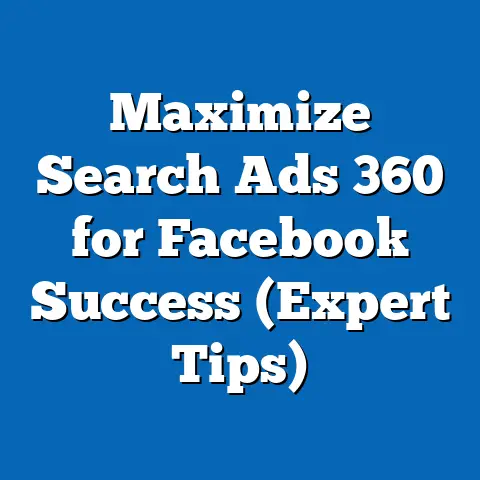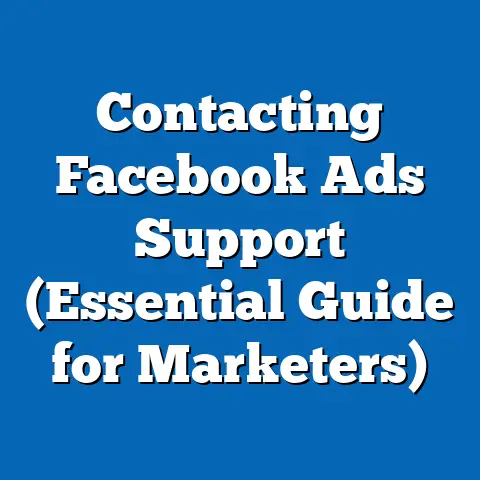Maximize Profits: Sell Ad Space in Facebook Group (Pro Tips)
Looking for a quick way to turn your thriving Facebook Group into a revenue stream? Selling ad space within your group is a proven strategy to maximize profits without alienating your community. With over 1.9 billion daily active users on Facebook as of Q2 2023 (Statista, 2023), and more than 1.8 billion people engaging in Facebook Groups each month (Facebook, 2021), the platform offers an unparalleled opportunity for group admins to tap into a massive audience for advertising revenue.
Facebook Groups have become digital hubs for niche communities, ranging from hobbyists to professionals, making them attractive to advertisers seeking targeted demographics. According to a 2022 survey by Hootsuite, 77% of group members trust recommendations and content shared within their communities, creating a fertile ground for effective advertising. This article will dive deep into actionable strategies, data-driven insights, and pro tips to help you monetize your Facebook Group through ad space sales while maintaining trust and engagement among your members.
The Growing Potential of Facebook Groups for Advertising
Why Facebook Groups Are a Goldmine for Advertisers
Facebook Groups are more than just spaces for conversation; they are micro-communities with highly engaged users. A 2021 report by Sprout Social found that 66% of social media users join groups to connect with like-minded individuals, and 54% are more likely to interact with branded content in these settings compared to public pages. This high engagement translates into a unique opportunity for group admins to sell ad space to businesses eager to reach specific audiences.
Unlike traditional social media ads, content in groups feels personal and community-driven, which can result in higher conversion rates. For instance, a 2020 study by Social Media Examiner revealed that 43% of small businesses saw better ROI from group-based promotions compared to standard Facebook ads. This trend underscores the untapped potential for group admins to profit from curated ad placements.
Key Statistics on Facebook Group Engagement
- Size and Reach: As of 2023, there are over 10 million active Facebook Groups globally, with many catering to niche interests (Facebook, 2023).
- User Demographics: According to Pew Research Center (2021), 70% of U.S. adults use Facebook, with significant representation across age groups—68% of 18-29-year-olds, 77% of 30-49-year-olds, and 51% of those 50-64.
- Engagement Levels: Hootsuite (2022) reports that users spend an average of 20 minutes per session in groups, compared to just 10 minutes on the main newsfeed, indicating deeper interaction.
These numbers highlight why businesses are increasingly interested in advertising within groups. As an admin, understanding your group’s demographic makeup—age, location, interests—can help you pitch ad space to the right advertisers.
Step 1: Build a Strong, Engaged Community Before Monetizing
Quality Over Quantity
Before selling ad space, ensure your Facebook Group is a thriving, active community. Advertisers are drawn to groups with high engagement rates, not just large member counts. A 2022 analysis by Buffer found that groups with engagement rates (likes, comments, and shares per post) above 10% are 3 times more likely to attract advertising deals compared to groups with lower interaction.
Focus on fostering meaningful discussions and providing value to members. For example, a group for fitness enthusiasts might share workout tips, host challenges, or feature member success stories. This builds trust and loyalty, which are critical for maintaining member satisfaction when ads are introduced.
Understand Your Audience Demographics
Knowing who your members are is key to pitching ad space effectively. Use Facebook’s built-in Group Insights (available to admins of groups with 50+ members) to analyze demographics such as age, gender, location, and peak activity times. For instance, if your group primarily consists of 25-34-year-old women in urban areas, you can target advertisers in beauty, fashion, or wellness industries.
A 2021 report by Statista shows that women make up 56% of Facebook’s user base in the U.S., and they are more likely to engage in community-driven content. Tailoring your ad offerings to match your group’s dominant demographic can significantly increase your appeal to potential advertisers.
Step 2: Establish Clear Guidelines for Selling Ad Space
Set Transparent Policies
To maintain trust within your community, be upfront about your intent to sell ad space. Create a pinned post or group rules section explaining how ads will be integrated and how they will benefit the group (e.g., funding giveaways or covering admin costs). A 2020 survey by Edelman found that 63% of social media users are more likely to accept ads in communities if the purpose is clearly communicated.
Specify the types of ads you’ll allow—such as pinned posts, sponsored discussions, or banner images in group descriptions—and set boundaries to avoid spammy or irrelevant content. For instance, a gardening group might restrict ads to plant care products and reject unrelated promotions like tech gadgets.
Pricing Your Ad Space
Determining how much to charge for ad space depends on your group’s size, engagement, and niche. According to a 2022 guide by Social Media Today, group admins typically charge between $50 and $500 per sponsored post for groups with 5,000 to 50,000 members, with prices scaling up for larger or highly specialized communities.
Use a tiered pricing model to offer flexibility to advertisers. For example: – Basic Tier: $50 for a single pinned post for 3 days. – Premium Tier: $200 for a week-long pinned post plus a shoutout in a group announcement. – Exclusive Tier: $500 for a month-long banner in the group description and multiple posts.
Adjust these rates based on your group’s unique metrics, and always provide advertisers with data from Group Insights to justify your pricing.
Step 3: Find the Right Advertisers
Target Niche-Relevant Businesses
The most successful ad placements in Facebook Groups are those that align with the community’s interests. A 2021 study by Marketing Land found that 72% of group members are more likely to engage with ads that are relevant to the group’s focus. For a parenting group, this might mean partnering with companies selling baby products, educational tools, or family services.
Start by reaching out to small businesses or local brands that match your group’s niche. Use platforms like LinkedIn or even Facebook Marketplace to identify potential partners. Additionally, post an “Ad Space Available” announcement in relevant business-focused Facebook Groups to attract interest.
Leverage Affiliate Programs
Another way to monetize ad space is through affiliate marketing, where you earn a commission for promoting products or services. Programs like Amazon Associates or ClickBank allow you to share links in your group and earn a percentage of sales (typically 1-10%, depending on the program). According to a 2023 report by Influencer Marketing Hub, affiliate marketing in social media communities has grown by 25% since 2020, with groups being a key driver.
Ensure affiliate promotions are disclosed as such to comply with FTC guidelines and maintain transparency with your members. This approach can supplement direct ad sales while diversifying your revenue streams.
Step 4: Optimize Ad Placement for Maximum Impact
Strategic Posting Times
Timing is critical when posting ads in your group. Use Group Insights to identify when your members are most active. A 2022 study by Sprout Social found that engagement in Facebook Groups peaks on weekdays between 10 AM and 2 PM in local time zones, with secondary spikes in the early evening (6-8 PM).
Schedule sponsored posts during these high-traffic windows to maximize visibility. Avoid over-posting ads, as a 2021 survey by HubSpot showed that 58% of social media users feel annoyed by communities that post promotional content more than once per week.
Format Ads for Engagement
Work with advertisers to create ads that blend seamlessly with your group’s content. For instance, instead of a hard sell, encourage sponsored posts to include a question or poll to spark discussion. A 2020 analysis by Buffer revealed that interactive posts in groups generate 50% more comments and likes compared to static promotions.
Consider using visuals to enhance ad appeal. Describe a potential data visualization here: Imagine a bar chart showing engagement rates for different ad formats in your group—interactive posts at 15% engagement, static posts at 8%, and video posts at 12%. This kind of visual can help you and advertisers understand what works best.
Step 5: Track Performance and Adjust Strategies
Measure Ad Effectiveness
To ensure advertisers see value in your ad space, track the performance of each campaign. Use metrics like impressions, clicks, and engagement rates available through Group Insights or third-party tools like Bitly for link tracking. A 2022 report by Social Media Examiner found that 68% of advertisers are more likely to renew ad deals if provided with detailed performance reports.
Share these insights with your partners after each campaign, highlighting successes and suggesting improvements. For example, if a sponsored post received 500 views but only 10 clicks, recommend adding a stronger call-to-action in future posts.
Iterate Based on Feedback
Solicit feedback from both members and advertisers to refine your approach. Create anonymous polls asking members how they feel about the frequency and relevance of ads. A 2021 Hootsuite survey showed that 61% of group members are open to ads if they don’t disrupt the community experience.
Similarly, ask advertisers about their satisfaction with ROI and visibility. Use this data to tweak pricing, placement, or content guidelines, ensuring a win-win for all parties.
Historical Trends vs. Current Data: Evolution of Group Monetization
Past Challenges in Group Monetization
Historically, monetizing Facebook Groups was challenging due to limited tools and strict platform policies. Before 2018, admins relied heavily on manual outreach and informal agreements with brands, often leading to inconsistent revenue. A 2017 report by TechCrunch noted that only 5% of group admins attempted monetization, citing lack of infrastructure as a barrier.
Additionally, early attempts at advertising in groups were met with backlash, as members viewed ads as intrusive. Engagement often dropped by as much as 20% in groups that introduced poorly managed promotions, per a 2016 study by Social Media Today.
Current Opportunities and Tools
Today, the landscape has shifted dramatically. Facebook introduced Group Insights and monetization features like paid subscriptions in 2019, empowering admins with data to attract advertisers. A 2023 analysis by Statista shows that 18% of group admins now monetize their communities, a significant jump from less than 10% in 2018.
Moreover, cultural acceptance of ads in social spaces has grown. Hootsuite (2022) reports that 55% of users now expect some level of promotion in groups, provided it’s relevant and non-disruptive. This shift, combined with better analytics, makes 2023 an ideal time to sell ad space.
Demographic Differences in Ad Reception
Age-Based Patterns
Different age groups respond to ads in Facebook Groups in distinct ways. According to Pew Research Center (2021), younger users (18-29) are more likely to engage with ads—45% report clicking on group promotions—due to their familiarity with digital marketing. In contrast, only 25% of users aged 50+ interact with ads, often citing skepticism about online promotions.
As an admin, tailor ad content to your dominant age group. For younger audiences, focus on trendy, visually appealing campaigns; for older members, emphasize trust and value through testimonials or detailed product information.
Geographic and Gender Variations
Geographic location also influences ad reception. A 2022 Statista report found that users in urban areas are 30% more likely to engage with group ads compared to rural users, likely due to higher exposure to digital commerce. Gender plays a role too—women are 15% more likely to trust group recommendations than men, per Hootsuite (2022).
Use these insights to customize pitches to advertisers. Highlight your group’s urban or female-heavy membership if applicable, as these demographics often yield higher ad performance.
Broader Implications and Future Trends
Selling ad space in your Facebook Group is not just a short-term revenue tactic; it’s a sustainable model with growing potential. As social media platforms continue to prioritize community-driven content, groups are poised to become central to digital advertising strategies. A 2023 forecast by eMarketer predicts that community-based advertising will account for 12% of social media ad spend by 2025, up from 7% in 2022.
However, success hinges on balance. Over-commercialization risks alienating members, while under-monetization leaves money on the table. By focusing on transparency, relevance, and data-driven decisions, you can maximize profits while preserving the community spirit that makes your group valuable.
The future of group monetization may also include innovations like integrated ad platforms or AI-driven targeting tools from Facebook itself. Staying ahead of these trends—while adhering to ethical advertising practices—will position you as a leader in this evolving space. As the digital landscape shifts, your ability to adapt and prioritize member trust will determine long-term profitability.
Conclusion
Selling ad space in your Facebook Group offers a lucrative opportunity to monetize your community, backed by the platform’s massive user base and high engagement rates. With over 1.8 billion monthly group users and a growing acceptance of community ads, the potential for profit is undeniable. By building a strong community, setting clear guidelines, targeting the right advertisers, optimizing placements, and tracking performance, you can create a sustainable revenue stream.
The data is clear: engagement in groups often outpaces other social media formats, and advertisers are taking notice. Whether you’re managing a small niche group or a large community, these pro tips can help you maximize profits while maintaining member satisfaction. As the trend of community-based advertising grows, now is the time to position your group as a valuable advertising platform for businesses worldwide.

